Introduction

Have you ever wonder how a rainbow is formed?
While both mythical
and physical
explanation seemed convincing, little has been said
in the graphics world.
The motivation of this project is to render a realistic rainbow. Since
rainbow comes after the rain, rendering the rain becomes a necessity in
our physical model. Since rain has a rather boring path, to add to
the interest of the project, the controllability of the rain was taken
into account so that the system will allow users to determine the
desired motion of the rain. The techniques used to generate a rainbow
can also be applied on oily surfaces to model the change in color of
the patch, and so this project gets its title of Controllable Rain,
Rainbow and Oil Films.

Our Model
Rain
Rain consists of tiny water droplets having similar attributes, naturally,
rain modeling is a typical particle system problem.
The idea of using particle systems to model natural phenomena
has been introduced by William Reeves in 1983. Each rain droplet
has the same set of features e.g. size, position, velocity,
color, etc. In addition,
droplets have a birth and death cycle. That could be modeled by
distribution functions. At each time step, new particles are born into
the scene while old ones may hit the ground. The first attempt
to model these constraints resulted in the following result:
Here, the rainbow has slowly became visible and at
saturation , the rainbow stands out from
the rain. This is the effect comparable to the real situation, when
we looked at a faraway place that is raining and a rainbow is
cast in the air.
To model the external influence to the particles,
a controllable wind field to manipulate the motion of the
droplets. A few of the external effects are shown here:
Rainbow
A physically based model is used for the rainbow. We first split the color
of the light rays into white part and a pure frequency part using an
algorithm based on a
simple algorithm of
Dan Bruton. Our model of the rainbow
uses a precomputed lookup table to determine the
color of the rainbow.
Both the effects of white light and pure light is looked up and the results
combined. It is possible to have rainbows of specific frequencies only.
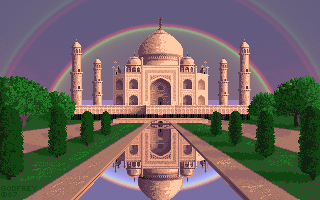
This is a picture composited using the Taj Mahal as
the foreground. The "rainbow" in the sky consists of red and green only, while
the one reflected in the pond is the rainbow with the full white spectrum.
This is an animation (10 MB MPEG movie) of the
rainbow in the rain. The rain in this animation is being controlled
using different types of wind.
Oil Films
A similar technique used to generate the rainbow is used for producing
the oil film. Here, we will look at an example (1.1 MB MPEG movie) with a Taj Mahal
image on the wall, and a mirror on the floor. Notice the oil film on
the mirror and the change of color on it as the camera moves.
The main difference between the oil film and the rainbow is that the effect
of the pure light is not precalculated and tabulated. An analytical formula is
used instead.

References
- Musgrave, F.K. Prisms and rainbows: a dispersion model for computer
graphics. PROCEEDINGS. GRAPHICS INTERFACE'89. Held: London, Ont.,
Canada, 19-23 June 1989. (Canada: Canadian Inf. Process. Soc, 1989. p.
227-34) (Conference paper - English).
- Reeves, W., Particle Systems -- A Technique for Modeling a Class of
Fuzzy Objects, Computer Graphics, Vol.17, No. 3, pp.359-376, 1983.
- Sims, K., Particle Animation and Rendering Using Data
Parallel Computation, Proceedings of SIGGRAPH '90, in Computer Graphics,
Vol 24, No. 4, pp. 405-413, 1990.
- Hodgins, J. and O'Brien, J. , Dynamic Simulation of Splashing
Fluids, To appear in Proceedings of Computer Animation '95.
- Potmesil, M. Modeling Motion Blur in Computer Generated Images,
Computer Graphics, Vol 17, No. 3, pp 389-399, 1983.

Alice Tull and
Helios Tsoi
December 1995



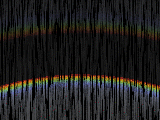 Rain under gravity (700 KB MPEG movie)
Rain under gravity (700 KB MPEG movie)
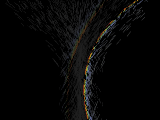 Rain merging into a column (857 KB MPEG movie)
Rain merging into a column (857 KB MPEG movie)
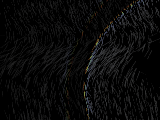 Rain swaying (854 KB MPEG movie)
Rain swaying (854 KB MPEG movie)
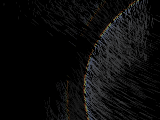 Rain merging into moving column (844 KB MPEG movie)
Rain merging into moving column (844 KB MPEG movie)
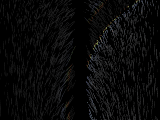 Rain splitting apart (551 KB MPEG movie)
Rain splitting apart (551 KB MPEG movie)


